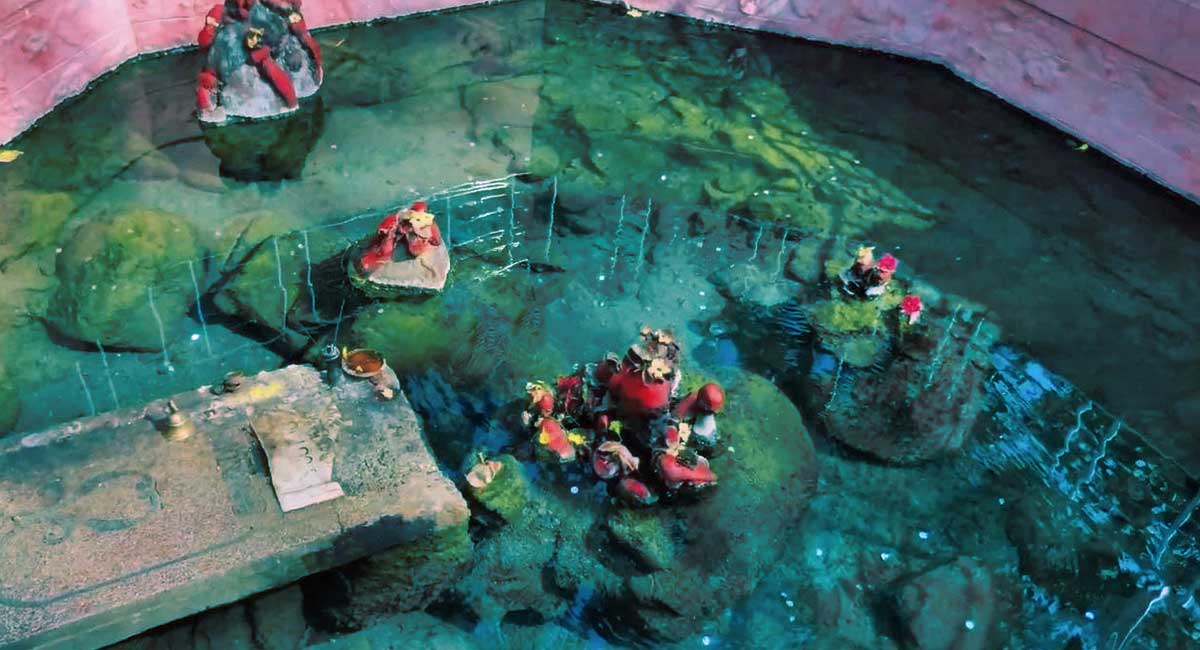Taptapani Hot Springs: Nature and Water
Taptapani Hot Springs, situated in the serene hills of the Eastern Ghats in Odisha, is one of the region’s most spiritually and geologically intriguing destinations. Known for its naturally hot sulfuric water, the site draws pilgrims, nature lovers, and curious travelers alike. “Taptapani” literally means “boiling water” in Odia, aptly named after the hot spring that gushes continuously with warm, mineral-rich water believed to have healing properties.
Origins and Mythology
The story of Taptapani is as rich and warm as its waters. According to local legends, a sage or deity is said to have wept, which is believed to have given rise to the hot spring. Some believers trace its origin to the tears of Mata Sati, who self-immolated during a sacred fire ritual, thereby endowing the place with divine significance. Another version connects it to Goddess Kandhuni Devi, a local deity enshrined in a nearby temple. For centuries, the spring has been revered not merely as a geographical curiosity but as a holy site where divine powers manifest in tangible ways.
Local communities have long embraced a more spiritual interpretation, actively attributing the hot springs to sacred forces or divine blessings, even as geologists explain them through geothermal activity, where molten rock superheats underground water, causing it to rise to the surface rich in minerals. For them, science may explain the “how,” but it is faith that explains the “why.” The hot water is considered sacred, pure, and capable of curing ailments ranging from skin diseases to joint pain.
Journeying to Taptapani
Taptapani is approximately 50 kilometers from Berhampur (also known as Brahmapur), a major city in southern Odisha, which is well-connected by road and rail. From Berhampur, the journey to Taptapani is about 1.5 to 2 hours by road. Since there are few and irregular public transportation choices, using a cab or private automobile is the most practical method to get there.
The route from Berhampur to Taptapani is incredibly picturesque. As you ascend through the Eastern Ghats, the landscape unfolds in layers of misty hills, tribal villages, lush forests, and sparkling streams. The serenity of the drive itself sets the tone for the spiritual and sensory experience that awaits.
Soaking in the Experience
As you approach the spring, the faint scent of sulfur greets you—an earthy hint of the geothermal forces below. Wisps of steam rising gently from the water serve as nature’s invitation to slow down and immerse yourself. A modest temple complex houses the main spring, where pilgrims frequently gather to offer prayers before taking a ritual dip.
The site features a sacred kund (tank) with separate bathing enclosures for individuals of different genders. Maintained by the Odisha Tourism Development Corporation (OTDC), the facilities are basic but adequate. It’s advisable to bring your towels and bathing essentials. Many visitors collect the spring water in bottles to take home, believing it to retain its therapeutic properties.
The bathing experience is more than just physical—many describe it as spiritually cleansing, with the warmth of the water seeping into both the body and the soul.
A Tapestry of Traditions and Beliefs
Taptapani holds deep cultural value among the indigenous communities of southern Odisha, particularly the Saora and Kondh tribes. For them, the hot spring is not just a natural phenomenon but a place of power and healing. The Kandhuni Devi Temple, situated nearby, contributes to the spiritual ambiance of the area. Rituals and festivals often take place here, especially during Makar Sankranti and other auspicious days, attracting local devotees and tourists.
Nature’s Surroundings and Wild Companions
Taptapani lies near the Chandragiri-Udayagiri belt and close to the Mahendragiri Hills, giving visitors access to dense forests, wildlife sanctuaries, and tribal villages. The Deer Park, located near the hot spring, is a pleasant stopover, especially for families. The surrounding area is part of the Gajapati forest range, and lucky visitors might spot peacocks, monkeys, and a wide variety of birds.
Accommodation and Amenities
The most convenient lodging is the Panthanivas Taptapani, run by the OTDC. It offers clean, budget-friendly rooms with attached bathrooms, a small restaurant serving simple Odia cuisine, and a peaceful garden with views of the forested slopes. During peak tourist season (October to February), booking is highly recommended.
For those seeking a more rustic experience, eco-tourism huts and forest lodges in nearby areas offer a deeper immersion in nature. While mobile network coverage exists, it can be spotty—a bonus for anyone looking to unplug and embrace a digital detox.
Best Time to Visit
The months of October through March are the best times to visit Taptapani because of the pleasant, cool weather. During the monsoon season (June–September), the area becomes lush and green, although slippery roads and landslides or flooding may interrupt travel. Summer (April–June) can be hot and humid, although the spring water remains a fabulous retreat regardless of the season.
Final Thoughts
Taptapani Hot Springs is more than a scenic retreat—it’s a confluence of geology, spirituality, and tribal heritage. Whether you’re seeking a healing soak, a cultural experience, or a peaceful retreat from the chaos of urban life, Taptapani offers a unique, soulful journey. The serene ambiance, warm water, and surrounding forested hills create an immersive natural escape. For those exploring Odisha’s less-traveled paths, this thermal gem is an unforgettable stop on the map.


